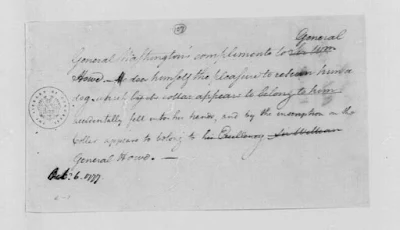As happens far too often in my life a little fact lead me down a rabbit hole of inquiry. Here, a little meme found me doing a but of research on a trivial point in history.
Here is the meme I was sent. A interesting but trivial matter. But the more I looked the more I found!
From Wikipedia, "Dogs in the American Revolutionary War" article:
"Returning General Howe's Terrier"
"Like George Washington and many other commanders, General Sir William Howe, a British commander, kept dogs with him while he was in battle. During a surprise attack on the British at Germantown on October 4, 1777, Howe's fox terrier, Lila, was lost in the commotion and ended up joining the American Army as it withdrew from the battlefield back to its encampment. When Howe's dog found its way into Washington's headquarters marquee, Washington was alerted that the dog's collar had Howe's name engraved. Washington ordered that the terrier be returned to Howe and included a polite note."
Next, a book about the incident:
"General Howe's Dog: George Washington, the Battle for Germantown and the Dog Who Crossed Enemy Lines"
www.amazon.com/General-Howes-Dog-Washington-Germantown/dp/1596090324
The actual note can be found in the National Archives. It reads,
"General Washington's compliments to General Howe. General Washington does himself the pleasure to return to him a dog, which accidentally fell into his hands, and, by the inscription on the collar, appears to belong to General Howe."
Sir William Howe called this, "an honorable act of a gentlemen."
Lastly, a commercial from a dog food company about the event:




.jpeg)



.jpeg)



.jpeg)









_kindlephoto-48780814.jpg)



_kindlephoto-66583247.jpg)
